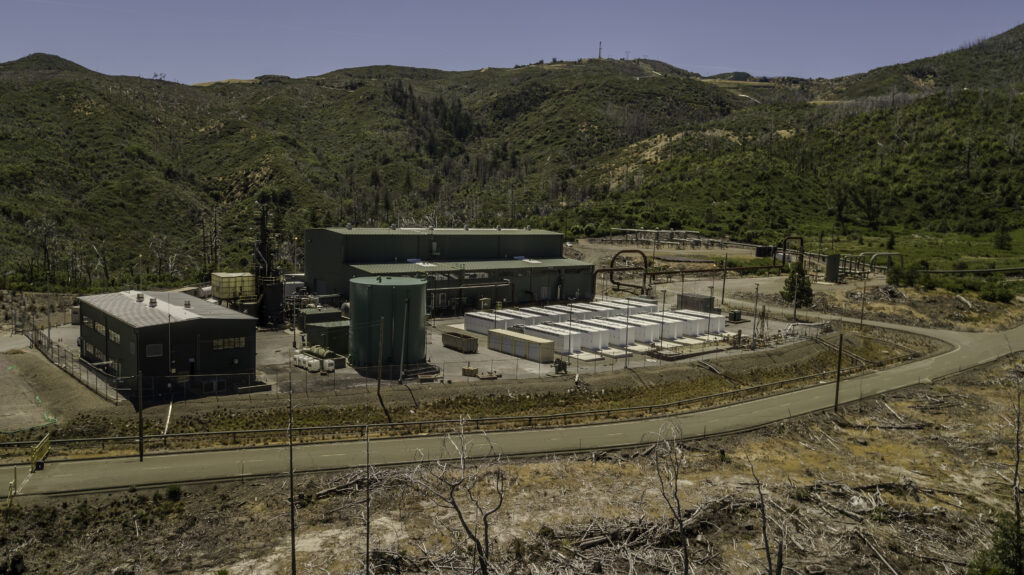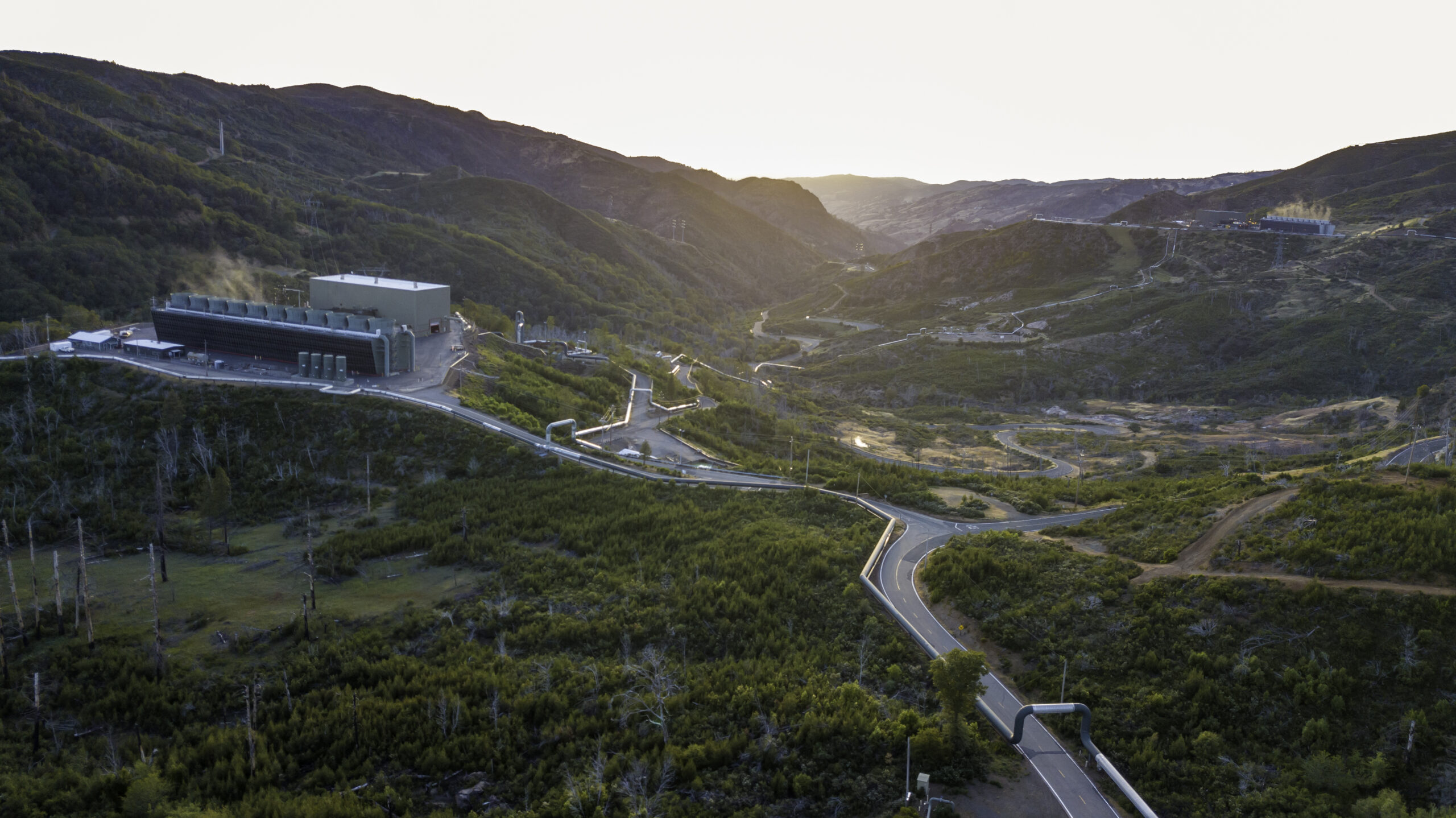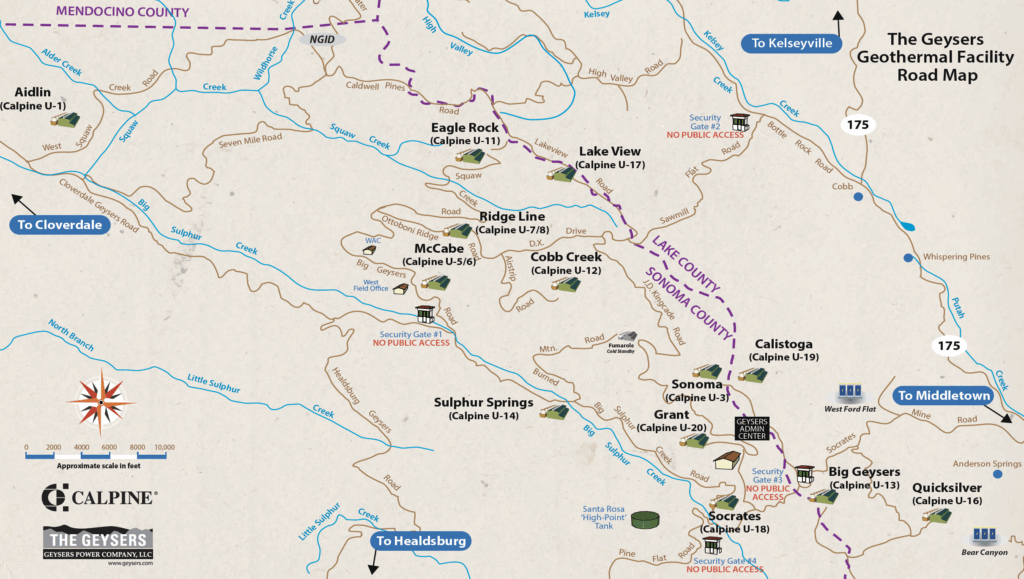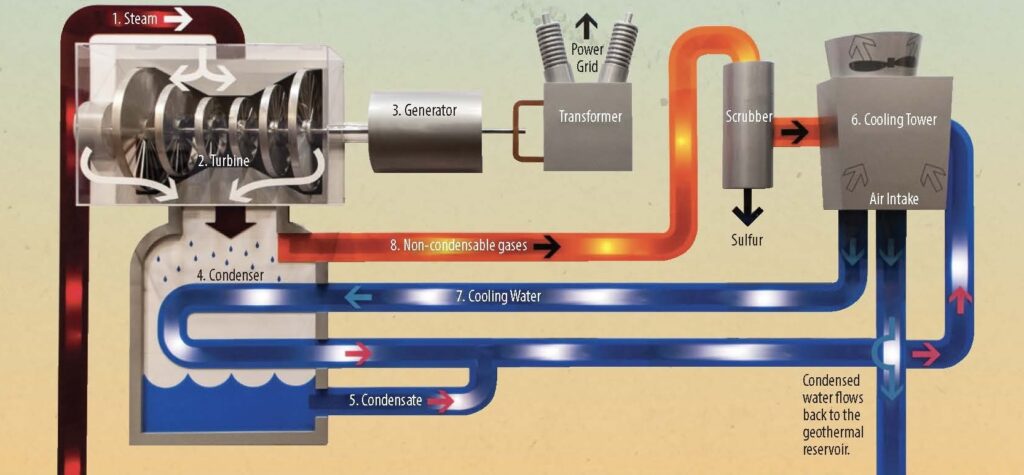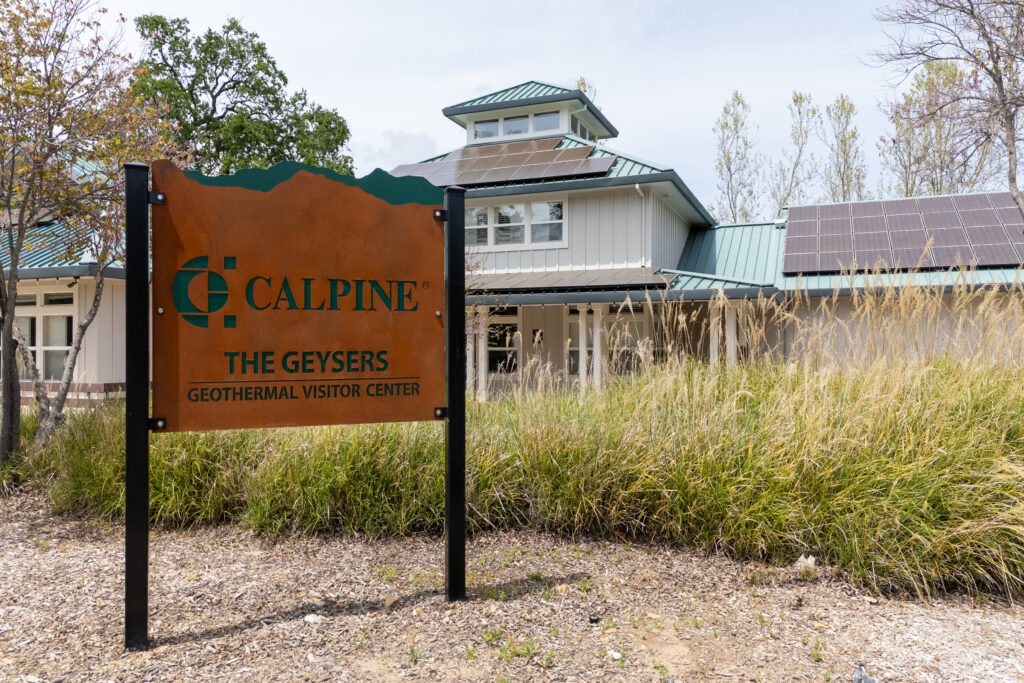Welcome!
Harnessing the Power of Nature.
Located north of San Francisco in the Mayacamas Mountains, The Geysers is the single largest geothermal electrical operation in the world. Calpine is proud to own and operate 13 geothermal plants within the 45-square-mile complex, representing approximately 725 MW of electrical generation capacity with expansion underway – enough to power 725,000 homes, or a city the size of San Francisco.
The Geysers supplies power to Sonoma, Lake and Mendocino counties, as well as portions of Marin and Napa counties. The Geysers is one of the most reliable energy sources in California, delivering extremely high availability and online performance.
What makes geothermal so special?
A geothermal resource occurs when water deep below the Earth’s surface is heated by exposure to hot, permeable rock. (“Geo” means “from the Earth” and “thermal” means “heat.”) At The Geysers, dry superheated steam is piped directly from below the Earth’s surface to steam turbines in our power plants to produce electricity. Steam production wells, some deeper than two miles, are drilled to access this naturally occurring steam. Once the steam reaches the surface, it is piped overland to a network of interconnected power plants, where it spins conventional steam turbines that drive generators to produce clean, reliable electricity.
This type of geothermal formation is quite rare and offers us the unique opportunity to efficiently convert the naturally occurring steam into power. This type of energy is clean and predictable, offering a reliable and renewable energy source.
The Geysers by the Numbers
The Geysers Geothermal Field 2024 Statistics
The Geysers Locations
- 75 miles North of San Francisco in the Mayacamas Mountain Range
- 10 power plants in Sonoma County:
- Aidlin U-1, McCabe U-5/6, Ridge Line U-7/8, Eagle Rock U-11, Cobb Creek U-12, Lake View U-17, Sulfur Springs U-14, Sonoma U-3, Grant U-20, Socrates U-18
- 3 power plants in Lake County
- Calistoga U-19, Big Geysers U-13, Quicksilver U-16
Calpine Geothermal Operations
- 28,447 acres (about 44.5 square miles)
Geothermal Wells
- 322 active steam wells
- 60 active injection wells
- Deepest well: 12,900 feet
- Average well depth: 8,500 feet
- Total Calpine Geysers wells drilled to date: 616
- Today’s Average Grassroots Drilling Time: 77 days (65 days drilling + 7 rig up/down)
- 2024 Average Steam Production Per Well: 11,938 pounds per hour
- Average Well Head Temperature: 366.6 degrees Fahrenheit
- Average Well Head Pressure: 82.3 PSIG
- Most Recent Steam Well Drilled: Prati State 66 completed on January 7, 2025
- Most Recent Injection Well Drilled: GDC36 completed on January 30, 2024
Power Generation
- First Exploratory Well: 1920
- First Modern Well: 1955, and is still in production today
- First Commercial Power Plant: PG&E Geysers Unit 1 in 1960
- Most Recent Power Plant Built: Aidlin U-1 in 1989
- 2024 Generation: 5,471,562 Net Megawatt Hours
- 2024 Average Unit Availability: 93.6631%
Facilities
- 13 operating geothermal plants
- Steam pipelines: 92.2 miles
- Injection water lines: 72 miles
- 21kV power lines: 75 miles
- Project roads: over 171 miles
Calpine’s Geothermal Power Plants at The Geysers
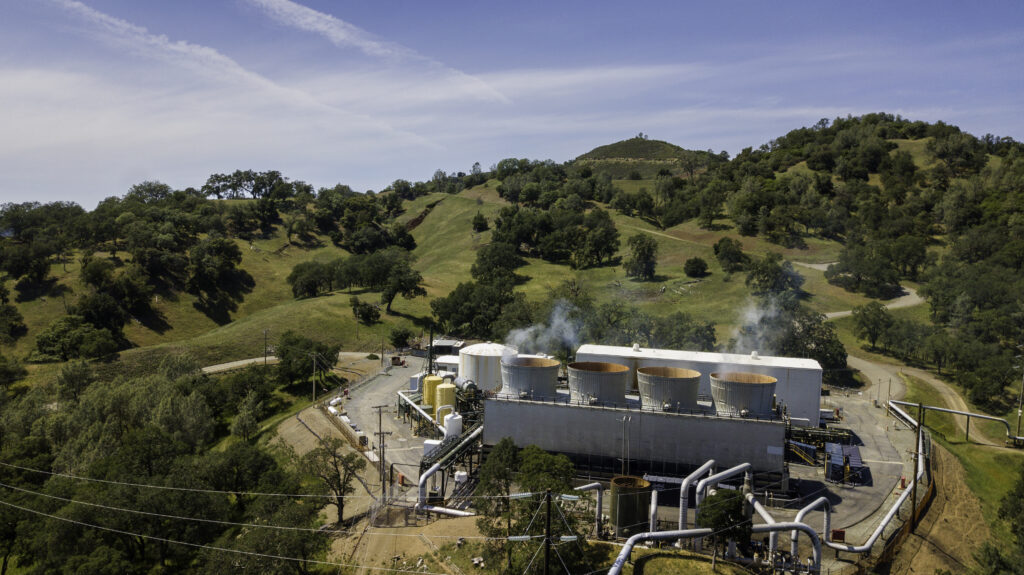
Aidlin
U-1
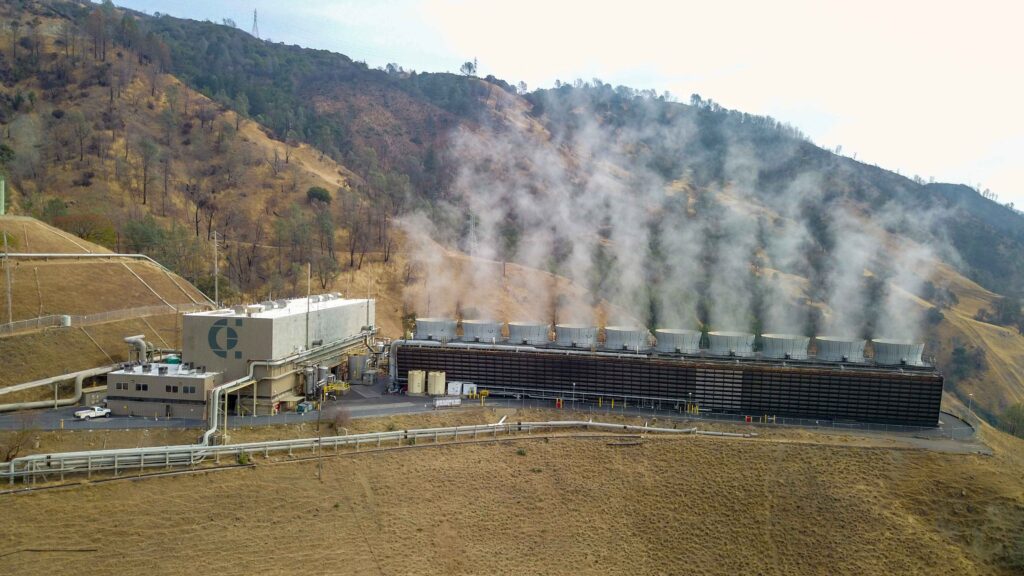
McCabe
U-5/6
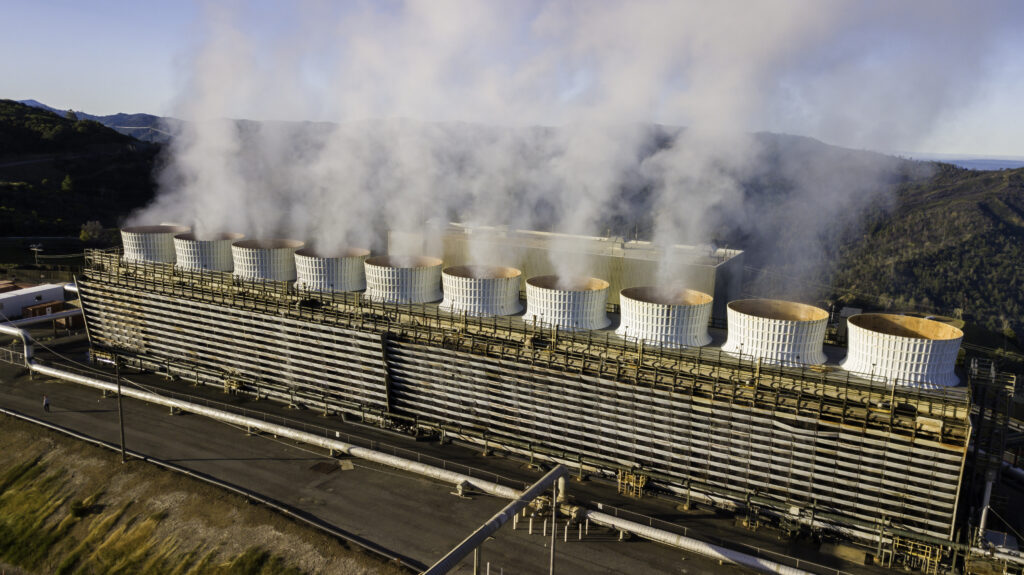
Ridge Line
U-7/8
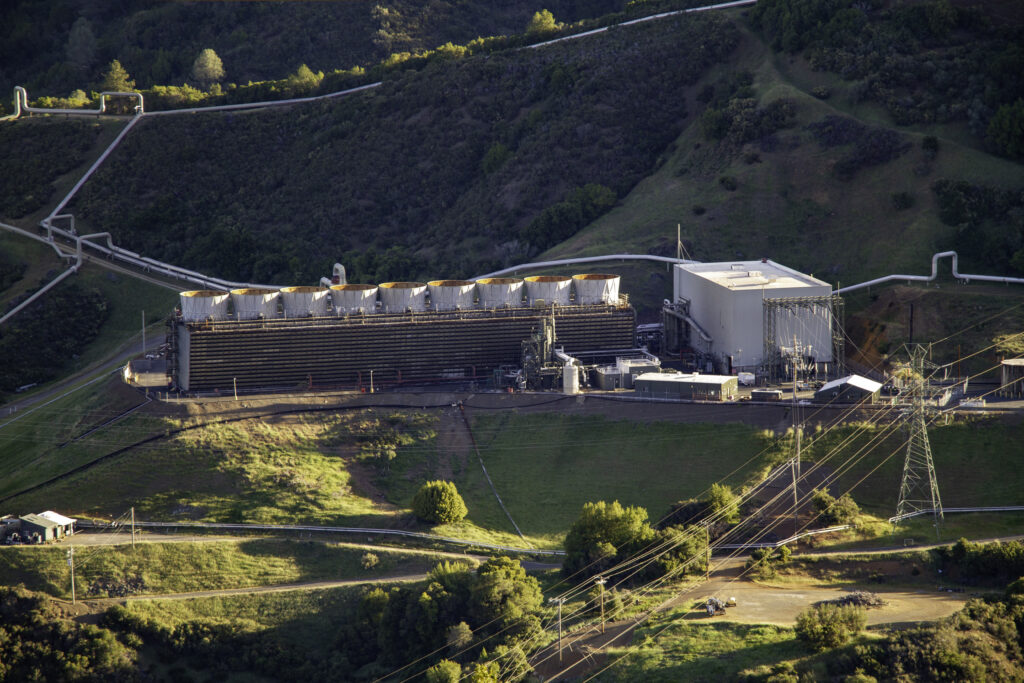
Eagle Rock
U-11
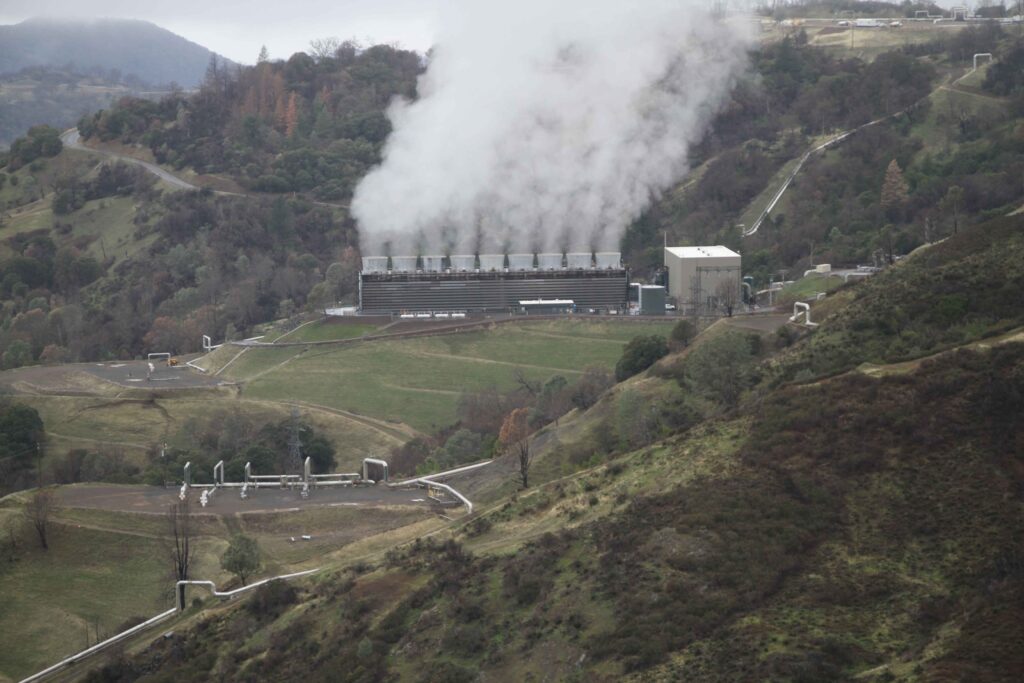
Cobb Creek
U-12
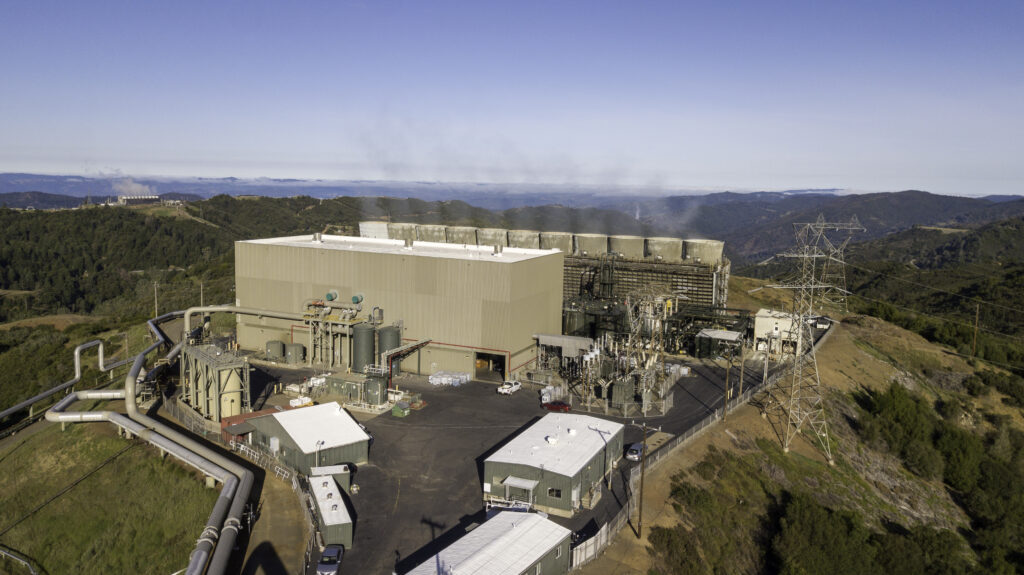
Lake View
U-17
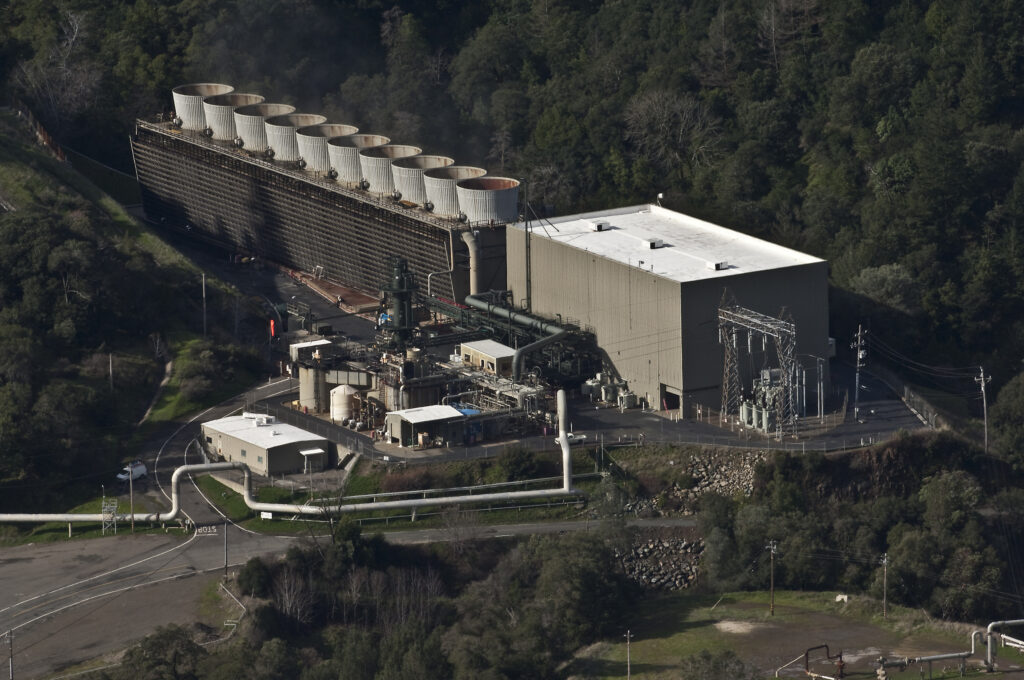
Sulfur Springs
U-14
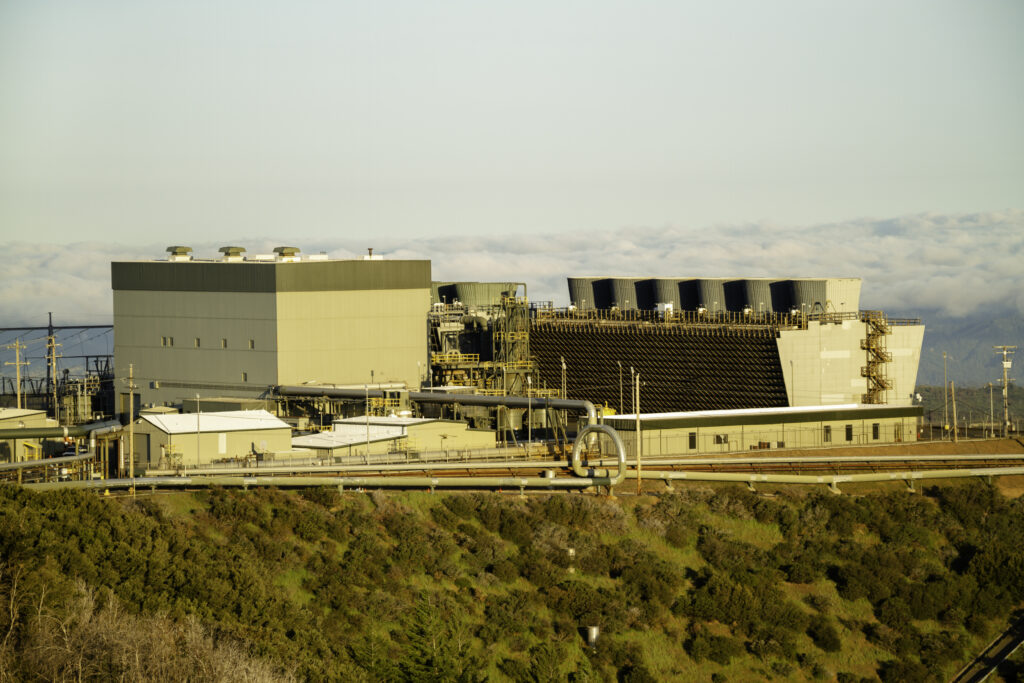
Sonoma
U-3
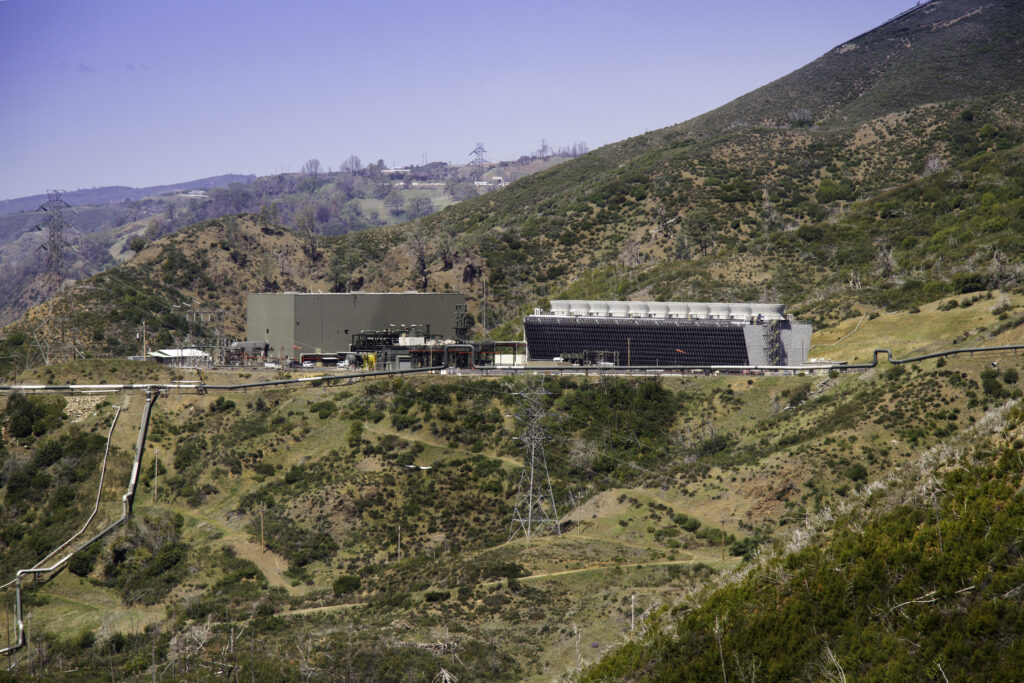
Grant
U-20
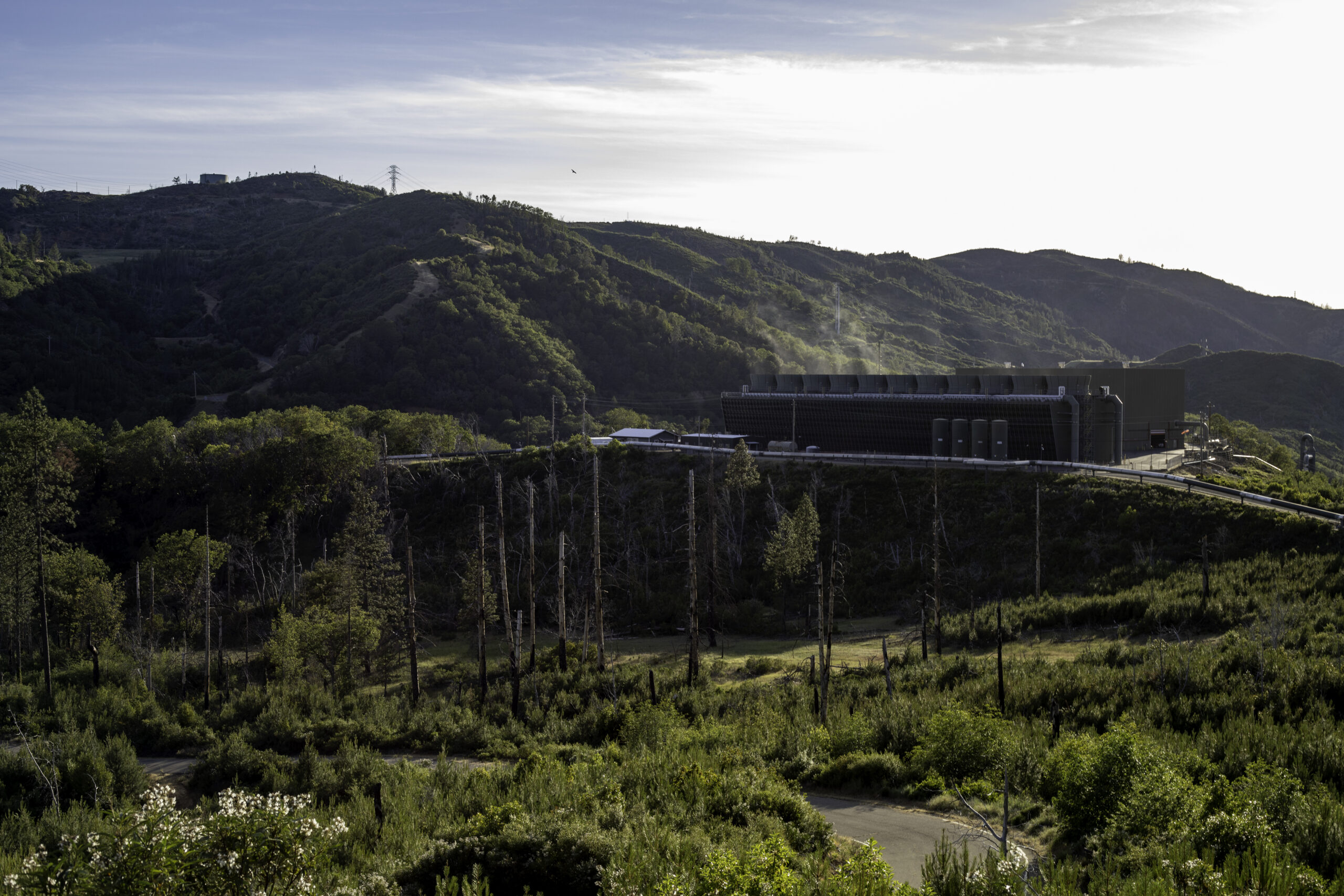
Socrates
U-18
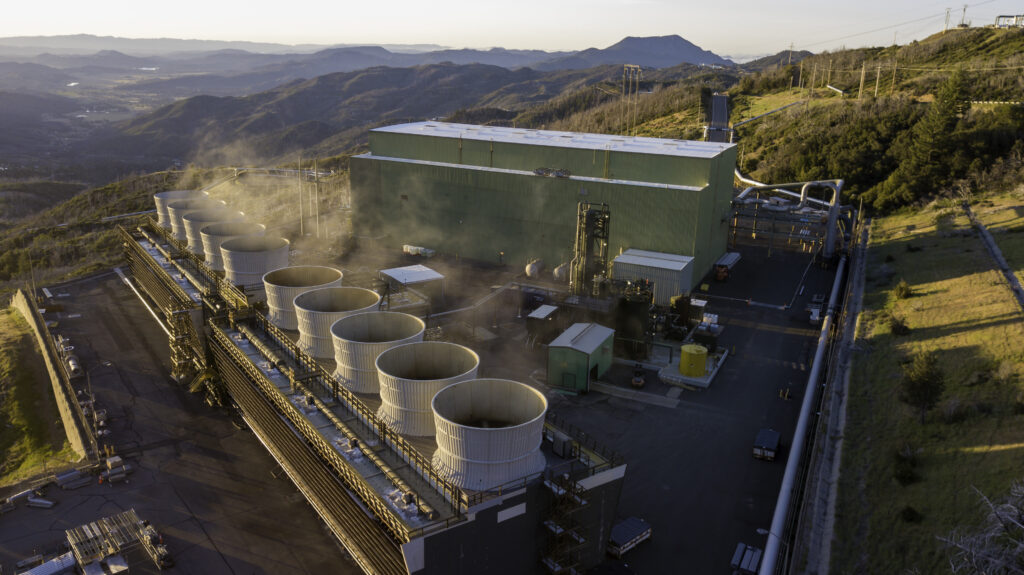
Calistoga
U-19
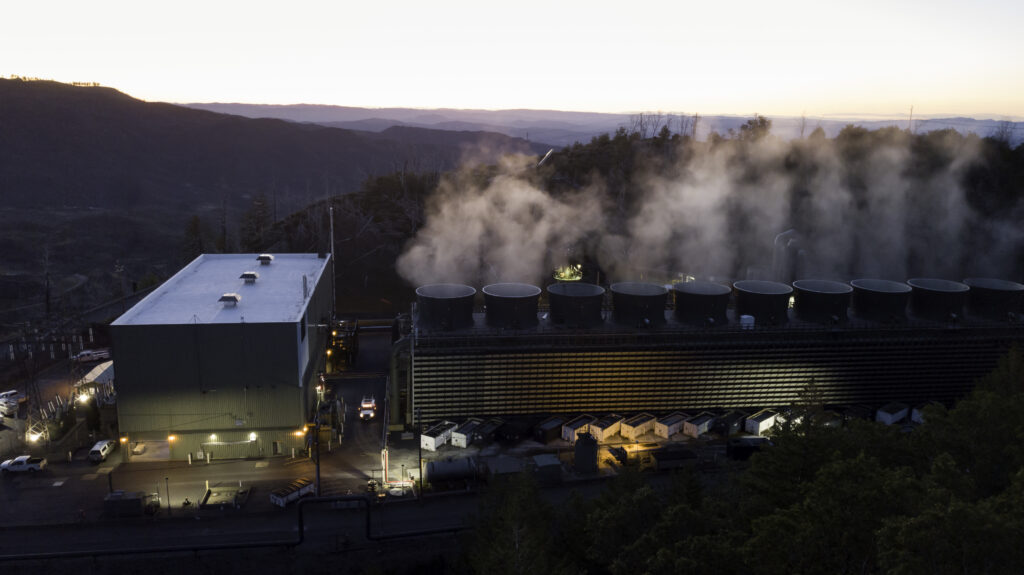
Big Geysers
U-13
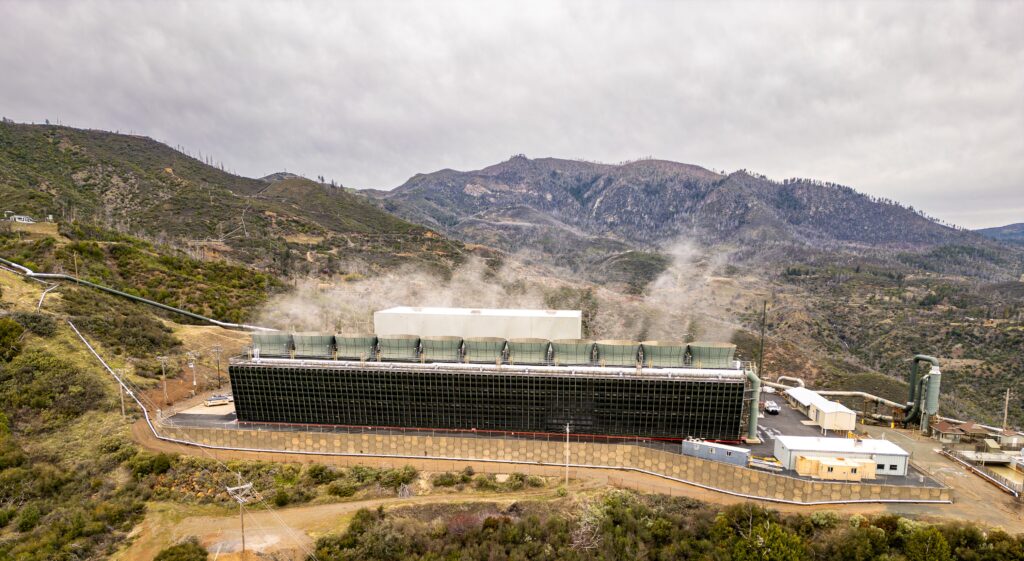
Quicksilver
U-16
Calpine’s Battery Energy Storage Systems at The Geysers
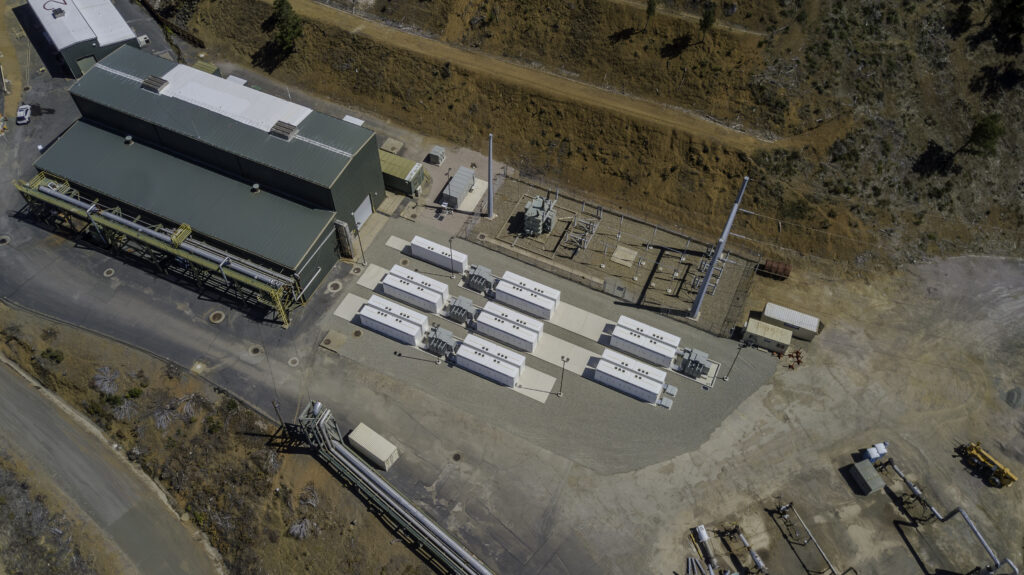
Bear Canyon BESS
